The Sword & Planet of Leigh Brackett
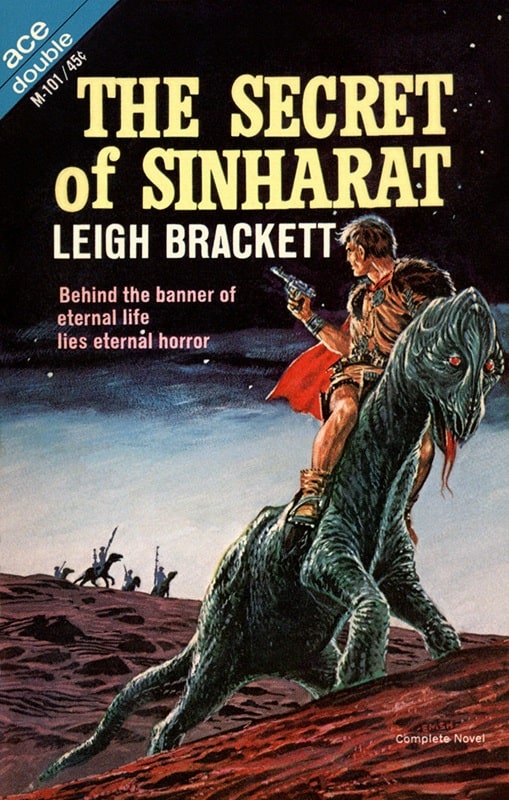 |
 |
The Secret of Sinharat and People of the Talisman (Ace Double M-101, 1964). Covers by Ed Emshwiller
Leigh Brackett (1915 – 1978) is my favorite from among the second generation of Sword & Planet writers (S&P). Many people I meet recognize her name from her association with Star Wars: The Empire Strikes Back, for which she wrote the initial script. Or for the script to The Big Sleep, which she also wrote. Or, for several western movies she wrote the scripts for.
Those don’t mean anything to me, though. I know her from her Space Opera and S&P books, particularly the series featuring Eric John Stark.
[Click the images for stark versions.]

Although Stark is born on Mercury, he’s an Earthman in a future in which the planets have been colonized by Earth. His parents are miners and are killed on Mercury, leaving Stark to be raised by local aborigines. He adapts to that life but is captured later by Earthmen and raised by one of them. This reminds one quite a bit of Tarzan’s origins, and Brackett was, of course, very familiar with ERB.
Stark never quite conforms to the restrictions of the civilized solar system, and his sympathies are always with the underdogs, particularly with aboriginal populations on the planets who are displaced and exploited by humans. This puts him into frequent conflict with the forces of the law.
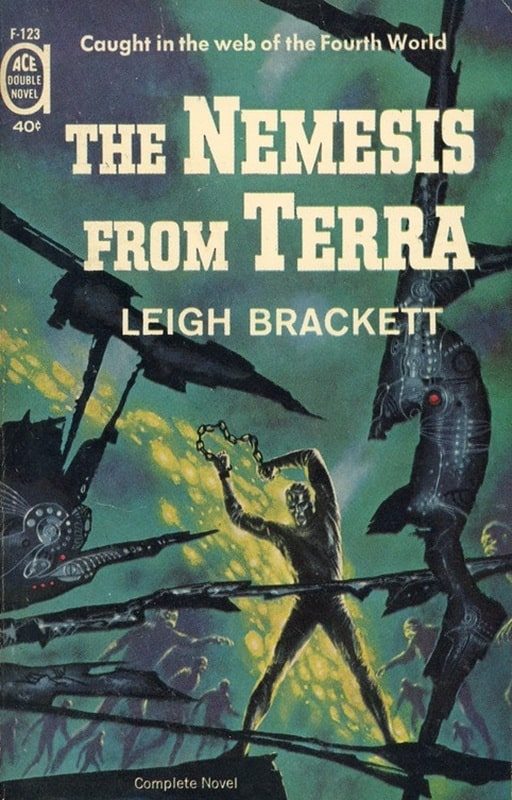
The first published Stark story was “Queen of the Martian Catacombs” in 1949. “Enchantress of Venus” followed, also in 1949, and then “Black Amazon of Mars” in 1951. These stories were later revised and published in two novels, The Secret of Sinharat, and People of the Talisman, and these two were collected together in a Del Rey book called Eric John Stark: Outlaw of Mars (1964), which is how I first read them.
Later, I acquired a hardback book called Stark and the Star Kings, which reprinted the three original stories and added a fourth, “Stark and the Star Kings.” Leigh Brackett was a favorite of mine and, as I note below, Stark’s adventures didn’t conclude with those Martian tales.

Leigh Brackett was married to author Edmond Hamilton, who was a prolific writer of SF and space opera, as well as some S&P fiction. I’m going to talk about Hamilton later so I won’t say more here, except to mention that — while I like both of them as authors — Brackett is the better writer in my opinion.
While both of them could write headlong adventure, Brackett did a better job at creating exotic and alien settings and characters. Part of that is her poetical prose, which rolls beautifully off the tongue and really conjures the exotic. I often read passages of Brackett out loud to myself to enjoy her use of language.
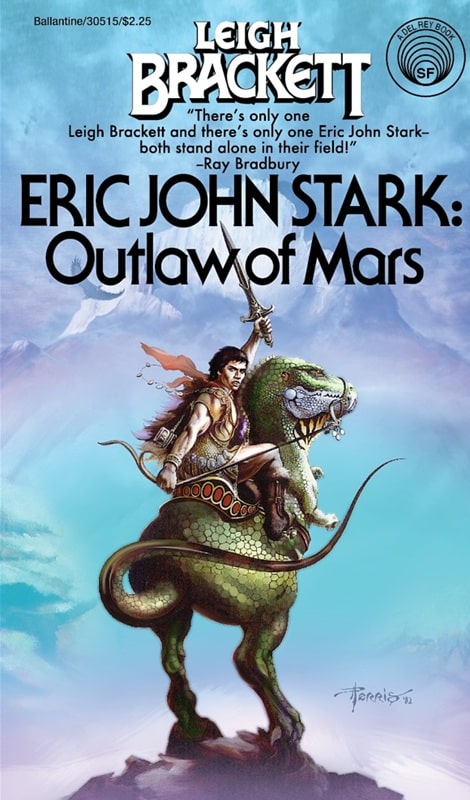 |
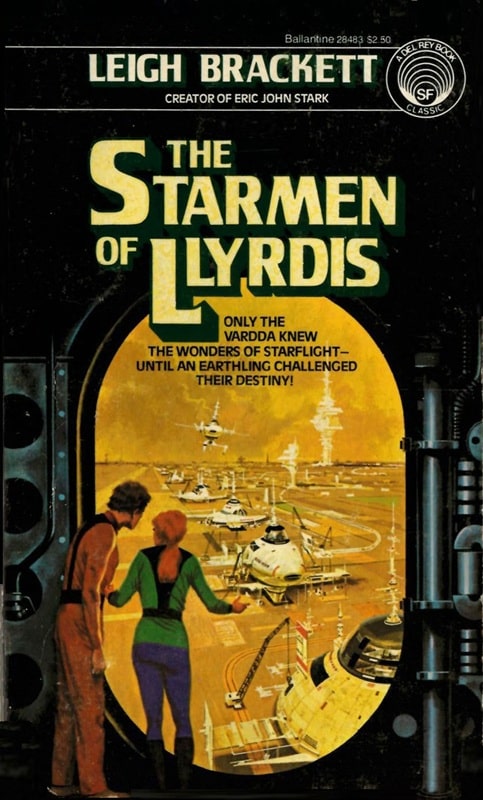 |
Eric John Stark: Outlaw of Mars (Del Rey, September 1982) and The Starmen of Llyrdis
(Ballantine Books, January 1976). Covers by Steve Ferris and Dean Ellis
Another element that raises Brackett’s level of prose, however, is her characterization. She creates fully rounded characters, even among her villains, and lets the story grow around them rather than creating the story and forcing the characters to fit it. This combination makes Stark one of the most memorable characters in SF/Fantasy history.
Between 1974 and 1976, Brackett returned to Stark and wrote a trilogy of new S&P adventures for him, set on a planet called Skaith, which is circling a dying sun. The tales are called:
The Ginger Star
The Hounds of Skaith
The Reavers of Skaith
I picked them up in a compendium volume called The Book of Skaith from the Science Fiction Book Club, which I’ve been a member of now for around 40 years. In fact, the Skaith stories were my first introduction to Eric John Stark, and only later did I find the earlier Martian stories.
 |
 |
The Sword of Rhiannon (Ace, August 1975). Cover artist unknown
Brackett wrote one more Sword & Planet novel that needs mentioning. This is The Sword of Rhiannon, which features a hero named Matt Carse. Carse is on a dry and desolate Mars but ends up getting tossed a million years into the past when Mars was a wet world. And he is possessed by the spirit of Rhiannon, a super intelligent being from that past Mars.
Again here, we have the beautiful prose mixed with lots of action and characters who we connect to emotionally.
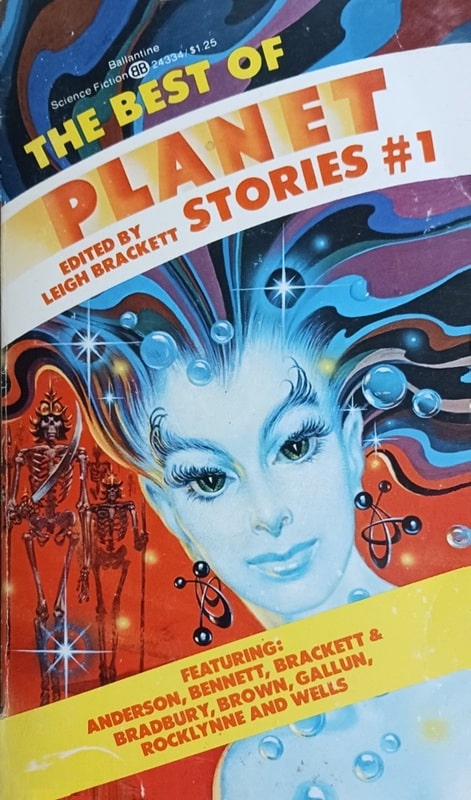 |
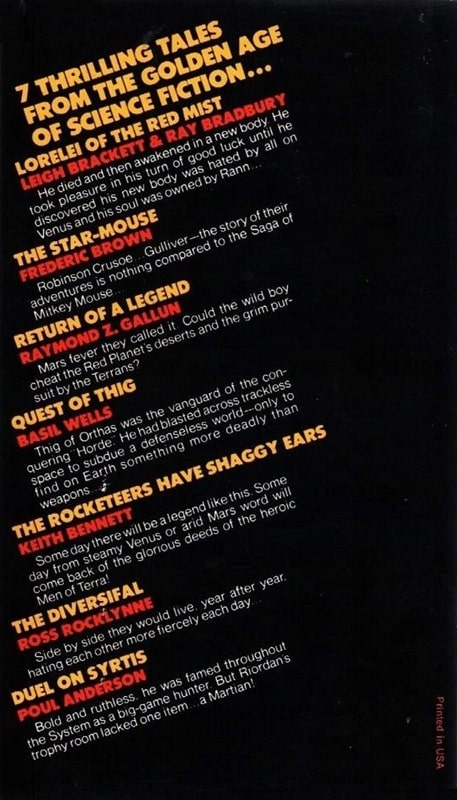 |
The Best of Planet Stories #1, edited by Leigh Brackett (Ballantine Books, January 1975). Covers by Kelly Freas
A special note needs to be made about an S&P short story Brackett wrote in collaboration with Ray Bradbury, who she mentored. I read it in The Best of Planet Stories #1, shown above. It’s called “Lorelei of the Red Mist” and it is quite enjoyable.
Brackett wrote many other SF and fantasy works that don’t fit the Sword & Planet mold. This article includes are a few from my collection. She also wrote westerns.

Outside of the S&P stories, I very much enjoyed a collection of her work called The Best of Leigh Brackett, which was edited by her husband Edmond Hamiliton.
Hamilton also wrote an introduction for the collection in which he revealed that Eric John Stark was Leigh Brackett’s favorite character of her own creation. She had good taste.
Charles Gramlich administers The Swords & Planet League group on Facebook, where this post first appeared. His last article for Black Gate was a look at Sword & Planet from DMR Books.
I read most of Brackett’s S&P several years ago in the three Haffner Press collections. (Although I still have yet to read the Skaith books.) Barsoom will always be my favorite, but man, Brackett could write rings around Burroughs. And, as I mentioned in a comment on another post, I love the noir vibe she brings to her stories with their hard-bitten, cynical and sometimes (looking at YOU, Matt Carse) not-very-nice protagonists.
Yes, she was the whole package, great characters, great prose, great settings.
I actually prefer her to Burroughs, though I do like him. I think of her when I think of Sword and Planet.
I like her prose style better than ERBs, but ERB had tremendous narrative drive that I really enjoy
The covers on that ACE Double are terrific. And you get 2 Brackett stories? Another book to put on my list to look for. Thanks for the article and the series – full of books to look for and old read favorites.
I found the Ace Double at a used book store. Still, it’s nothing compared to the one that had Brackett’s Sword of Rhiannon and Howard’s Conan the Conqueror in one. Imagining picking that up in the 1950s.
Would have been cool to see it on the stands
Glad you enjoyed
I agree with your comments on Brackett, and on her prose. A wonderful writer — my favorite in the “Sword and Planet” genre. Her other work is excellent too, including her mysteries (of which I’ve only read one though.)
It should be noted that “Queen of the Martian Catacombs” is only modestly altered as The Sword of Sinharat, but “Black Amazon of Mars” is VERY different from People of the Talisman. I’d recommend reading both versions. The Science Fiction Enyclopedia, by the way, suggests that the Ace Double revisions were actually done by Hamilton, and I do find that plausible.
The 1964 Ace Double was reissued in 1971, with alas a much weaker pair of covers (in my opinion.)
My review: https://rrhorton.blogspot.com/2018/12/ace-double-reviews-15-people-of.html
There is a pretty good novella by Hamilton alone, “World of Never-Men” (Imaginative Tales, July 1957), that is set on a Mars pretty similar to Brackett’s Mars (though it’s not the same one.) Alas, never reprinted to my knowledge, but I liked it.
I hadn’t heard that Hamilton did any revisions but tis possible since they were together. I’d also suggest people read the different versions. Helps flesh out the works.
I have the 1971 printing, and I am split. The Emsh cover for People of the Talisman on the 1964 edition is so delightfully psychedelic. But the Enric cover on the 1971 edition for The Secret of Sinharat is a lot more … muscular than the earlier one. YMMV.
And I will also note that the 1971 edition for People of the Talisman does have a short introduction by Mr. Edmond Hamilton, perhaps adding to the evidence of his taking part in its publication.
That might be. I know that Hamilton wrote some introductions for her. I think at the time he was a bigger name, particularly in SF. I figured it was because of that and because of their marriage.